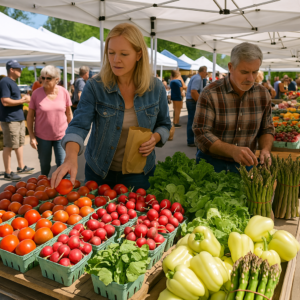
Canada is entering a new era of political and economic recalibration. With Mark Carney now sworn in as Prime Minister and a snap federal election called for April 28, 2025, all eyes are on what comes next — particularly for homeowners, buyers, and investors trying to anticipate the direction of the housing market.
Add in persistent U.S. tariffs on key Canadian exports and still-elevated inflation, and it’s clear that the coming months will be critical.
Here’s what to expect as the market adjusts to new leadership, a pending election, and the ongoing balancing act between interest rates, affordability, and supply.
1. Carney’s Policy Signals: What They Mean for Housing
📌 As a former Bank of Canada Governor, Mark Carney is known for fiscal caution and economic stability.
📉 His early decision to cancel the consumer carbon tax (effective April 1) may reduce cost pressure on homeowners.
🗳️ He’s also signaled that housing affordability will be a core election issue, with expectations of targeted platform commitments.
What This Could Mean:
-
More support for builders to improve housing supply
-
Tighter controls on foreign ownership to prioritize domestic demand
-
Incentives or expanded access for first-time buyers
📌 Expect markets to pause slightly until the election clarifies which direction housing policy will take.
2. Interest Rates and Mortgage Market Stability
🏦 The Bank of Canada remains on a measured rate cut path. While inflation has softened, tariff-related cost increases are still a risk.
🔹 The U.S. tariffs — 25% on steel and aluminum, and a 10% tariff on oil (starting April 2) — could create upward price pressure, affecting interest rate strategy.
What to Watch:
-
BoC could slow or pause rate cuts if inflation re-accelerates.
-
Mortgage lenders will remain cautious with fixed-rate pricing, especially on longer terms.
-
The spread between fixed and variable rates will continue to tighten.
📌 If you’re up for renewal, consider shorter fixed terms or hybrid strategies to retain flexibility.
3. Will Prices Climb Again After the Election?
🔹 Buyer demand is expected to rise in Q2 and Q3, especially if rates fall again post-election.
🔹 However, uncertainty until April 28 may create a temporary slowdown in listings and sales.
🔹 Builders are still facing elevated construction costs, meaning new supply won’t flood the market.
Market Outlook:
-
Spring may see a surge in activity, especially from first-time buyers trying to get in ahead of further price increases.
-
Suburban and smaller markets could see the most immediate growth as affordability improves.
-
Major urban centres may remain stable until more clarity on housing reform emerges.
4. What Buyers and Homeowners Should Do Now
📍 Buyers:
-
If your budget allows, consider buying before the election while competition is lower.
-
Pre-approval is key — lenders are tightening in advance of policy shifts.
📍 Homeowners:
📍 Sellers:
Conclusion
Canada’s housing market is once again at a crossroads. With a new Prime Minister and an election weeks away, the next chapter will be shaped by policy choices and voter sentiment.
📉 Rates may continue to fall, but not without interruptions.
🏡 Prices could rise again — but more gradually and unevenly across regions.
📊 The smart move right now is to stay informed, stay flexible, and plan ahead.

